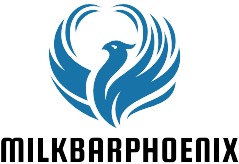Table of Contents
ToggleIn a world that’s always racing towards the next big thing, slow journaling offers a refreshing escape. Picture this: instead of hurriedly typing away on your phone or scribbling notes in a frantic frenzy, you take a deep breath and let your thoughts flow at a leisurely pace. It’s like sipping a fine wine instead of chugging a soda—both are enjoyable, but one leaves you feeling a bit more refined.
Slow journaling isn’t just about putting pen to paper; it’s a mindful practice that invites deep reflection and creativity. This approach encourages individuals to savor their thoughts, explore their feelings, and ultimately, discover insights that often get lost in the hustle and bustle of daily life. So why not trade in that fast-paced chaos for a moment of calm? Your mind—and your future self—will thank you for it.
Overview Of Slow Journaling Practice
Slow journaling serves as a mindful technique that counters the rapid pace of contemporary life. This practice involves dedicating specific time to reflect, allowing thoughts and feelings to surface without rush. Engaging in slow journaling can lead to deeper self-exploration and enhanced emotional awareness.
Participants often describe the process as savoring moments. Much like a fine wine, each thought deserves reflection, extending beyond mere writing. Insights gained during slow journaling promote creativity and clarity that often remain hidden in busy routines.
Individuals practicing slow journaling benefit from improved mental well-being. Taking time to articulate feelings fosters mindfulness and reduces stress. Regular engagement acts as a tool for self-discovery, facilitating a stronger connection with personal emotions and values.
Setting aside time for slow journaling results in greater awareness. Daily commitments may leave little room for contemplation, yet this practice invites intentional pauses. Ultimately, the journey of slow journaling cultivates a space for understanding and growth, encouraging a more balanced mental state.
Benefits Of Slow Journaling
Slow journaling offers numerous advantages that contribute to overall well-being. Participants often experience enhanced mental health and increased creative expression through this reflective practice.
Mental Health Benefits
Engaging in slow journaling fosters emotional awareness. Individuals report a significant reduction in stress levels as they take time to process their thoughts. This practice aids in identifying negative thought patterns. By recognizing these patterns, people can work toward changing them. Journaling also promotes mindfulness, grounding individuals in the present moment. Enhanced self-awareness can improve mood and resilience against daily challenges.
Creative Expression
Slow journaling serves as a canvas for creative exploration. Writers of all levels find joy in expressing their thoughts without a strict agenda. This unhurried approach nurtures original ideas and insights. Participants often describe a newfound freedom in their writing, leading to authentic self-expression. The relaxed pace allows for deeper connections with one’s feelings and inspirations. Many discover untapped creativity through this process, often resulting in unique perspectives and solutions.
How To Start A Slow Journaling Practice
Engaging in slow journaling begins with intention. Mindful choices enhance this practice.
Choosing The Right Journal
Selecting the ideal journal enhances the journaling experience. Individuals prefer options that resonate personally, be it a classic leather-bound notebook or a simple spiral-bound pad. Size also matters; a compact journal offers portability while a larger option allows for expansive thoughts. Material can influence the writing experience, with smooth paper often preferred for easy flow of thoughts. Pens add a touch of personality; some favor gel pens for their smoothness, while others enjoy the authenticity of a fountain pen. A journal that sparks joy increases the likelihood of consistent use, making it an essential aspect of starting this practice.
Setting Aside Time
Establishing a regular time for slow journaling promotes consistency. Observing quiet moments, whether early morning or late evening, encourages reflection. During this time, distractions should be minimal to foster a deeper connection with thoughts. Duration can vary; starting with ten to fifteen minutes allows for gradual immersion. Creating a comfortable environment sets the mood for creativity and introspection. Lighting a candle or playing soft music may enhance this atmosphere. Prioritizing this dedicated time ensures that slow journaling becomes a valued ritual, ultimately leading to a more profound self-discovery journey.
Techniques For Effective Slow Journaling
Slow journaling incorporates various techniques for deepening the practice and enhancing reflection. These methods support participants in cultivating mindfulness and inspiration during their journaling sessions.
Mindfulness Techniques
Mindfulness enhances the slow journaling experience. Focusing on breath anchors individuals in the present moment. Keeping distractions at bay creates a calming atmosphere. Observing surroundings with intention encourages greater awareness. Engaging the senses further enriches the experience, allowing participants to savor smells, sounds, and textures while they write. Practicing gratitude can also deepen reflections, prompting appreciation of daily moments. This mindfulness fosters emotional clarity, improving the overall journaling journey.
Prompts To Inspire Reflection
Using prompts stimulates thoughtful exploration. Writing about daily highlights encourages recognizing joyful moments. Reflecting on challenges can lead to insights about coping mechanisms. Asking questions such as “What am I passionate about?” sparks curiosity and self-discovery. Encouraging creativity through open-ended prompts allows for unique perspectives and expressions. Setting themes for weeks or months offers a structured approach for deeper, more meaningful entries. Adopting this method promotes sustained engagement and continuous growth in one’s slow journaling practice.
Challenges And Solutions
Slow journaling, while beneficial, presents various challenges. Understanding these obstacles helps individuals navigate their practice more effectively.
Common Obstacles
Time constraints often hinder slow journaling. Many participants struggle to carve out moments in their busy schedules. Distractions can also interrupt the flow of thoughts. A noisy environment or digital interruptions can break concentration. Additionally, self-doubt may emerge during writing sessions. Individuals sometimes question the value of their reflections. Overcoming these obstacles requires awareness and proactive measures to create conducive journaling conditions.
Tips For Staying Committed
Staying committed to slow journaling requires intention. Setting a specific time each day enhances consistency. Establishing a designated space decreases distractions significantly. Choosing a comfortable chair or a serene corner can make a difference. Using prompts helps spark inspiration when motivation wanes. There are various resources available, such as books and online communities, that provide ideas and support. Celebrating small victories, like completing a week of journaling, fosters a sense of accomplishment and motivates ongoing engagement.
Embracing slow journaling can transform one’s approach to self-reflection and creativity. By allowing thoughts to unfold at a comfortable pace, individuals can uncover deeper insights and foster emotional clarity. This mindful practice not only enhances mental well-being but also cultivates a richer connection with one’s inner self.
Integrating slow journaling into daily life encourages a sense of calm amidst chaos. As individuals commit to this practice, they may find that the journey of self-discovery becomes a cherished ritual. Ultimately, slow journaling serves as a powerful tool for personal growth and emotional resilience.




